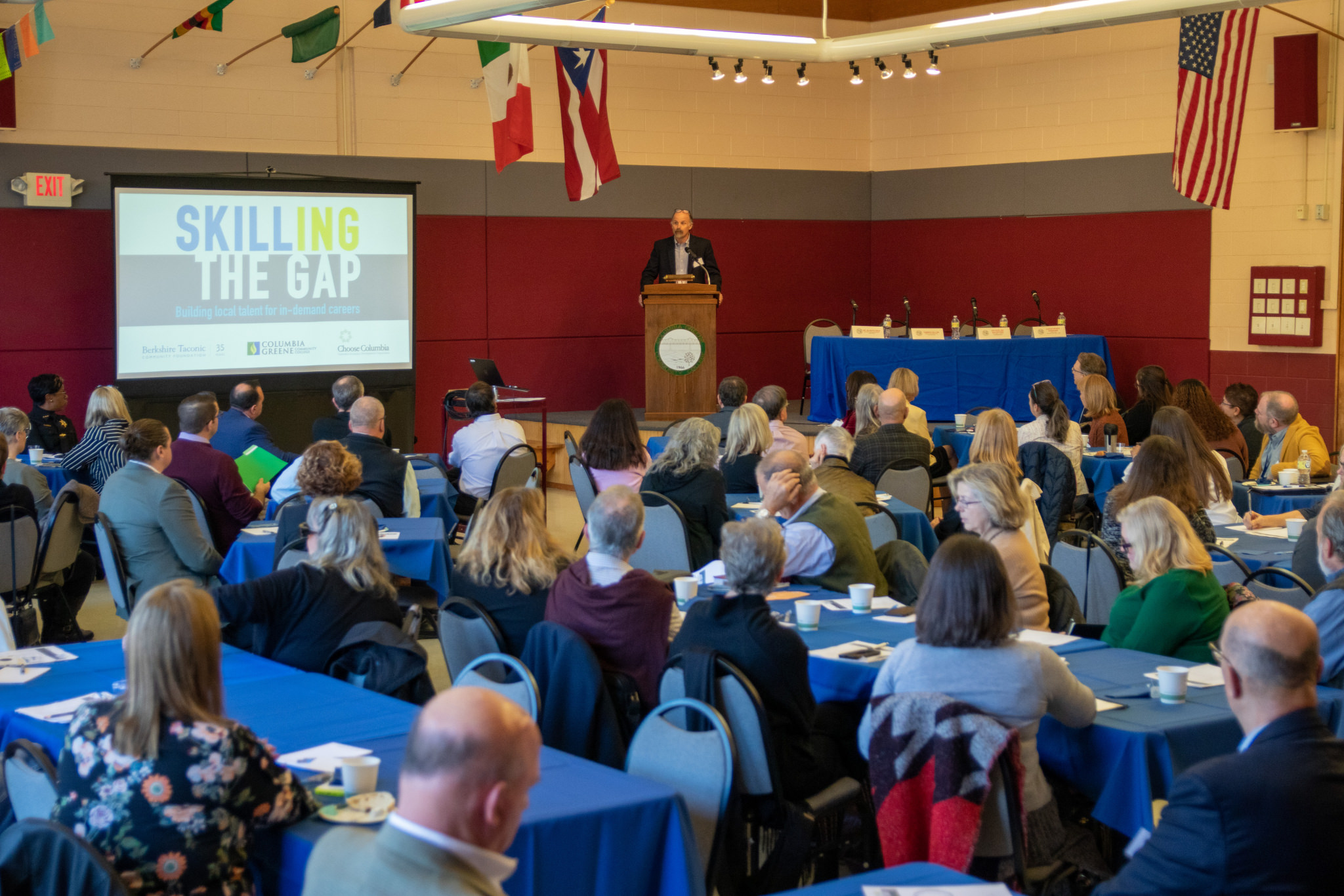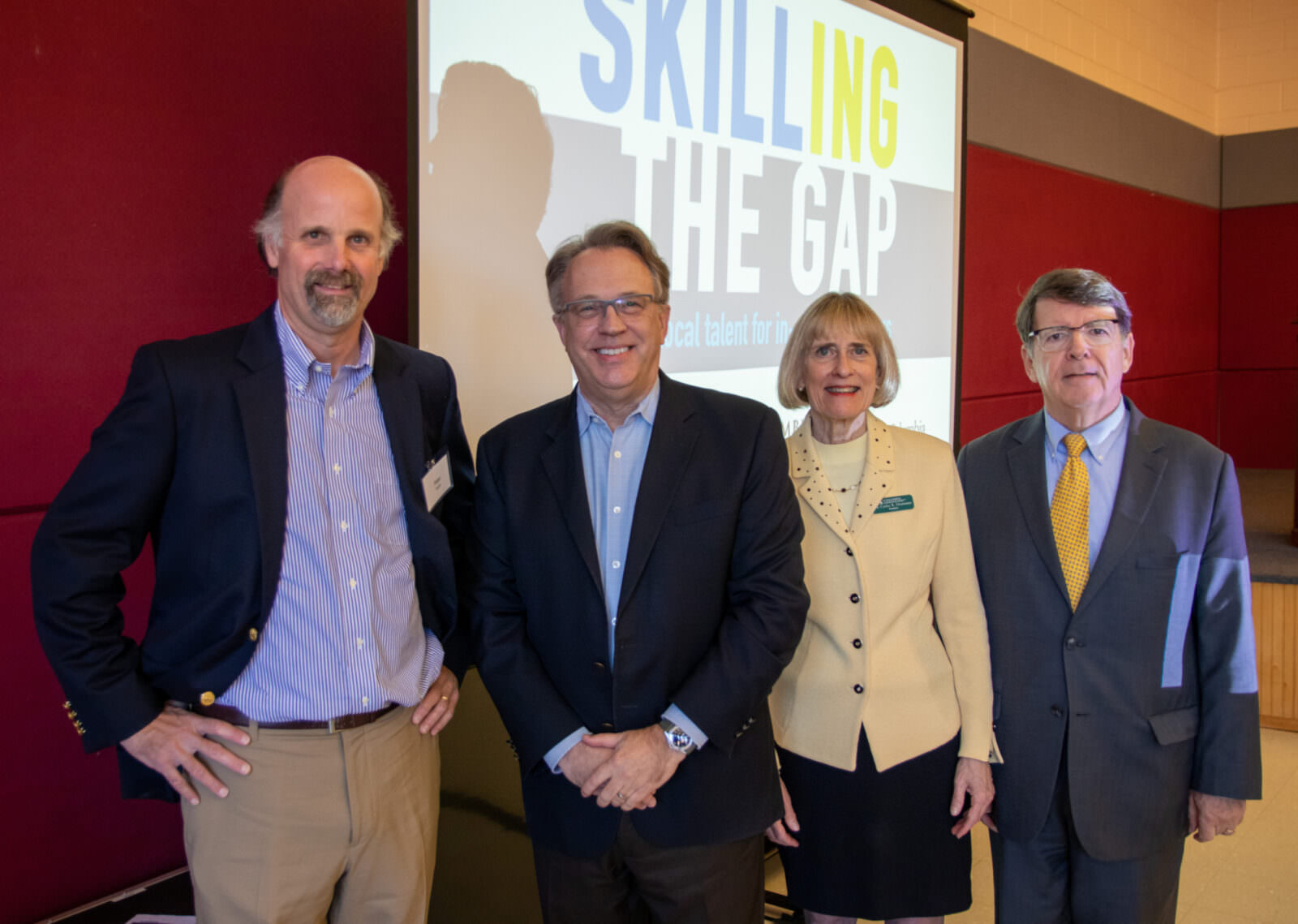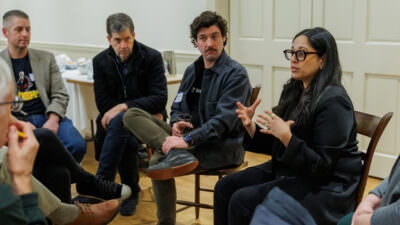On Friday, Oct. 21, Berkshire Taconic Community Foundation, Columbia-Greene Community College and Columbia Economic Development Corporation hosted Skilling the Gap — a free program conceived of to build stronger alignment between employers’ workforce needs and career pathways available to young people through in- and out-of-school learning opportunities.
“Focusing on the transition from school to career is an important step in building a skilled workforce and retaining young people in our region,” BTCF President Peter Taylor said in his opening remarks, citing opportunities “to learn skills and form connections with adult mentors while in high school [as] a proven pathway towards these ends.”
The cross-sector forum, held at Columbia-Greene Community College, was intentionally designed to bring together noted speakers and community members — among them 100 employers, schools, community-based organizations and funders — to address educational attainment, one of the community foundation’s four strategic priorities.
In his opening address, President and CEO of The Federal Reserve Bank of New York John C. Williams explored how education is the bedrock of economic opportunity, workforce development, and strong communities — likening economic prosperity to a Jenga tower: “Each piece is critical to the stability of the whole. Take one piece out, and the tower becomes unstable. Take the wrong piece out, and the whole tower can collapse,” he said, pointing to job training, transportation and broadband. (His remarks were later shared on the New York Fed’s website).
CGCC President Dr. Carlee Drummer gained a broadened perspective of the acute workforce needs in the Upper Hudson Valley. “The information shared was invaluable for Columbia-Greene as the College seeks not only to strengthen but also to find new partnerships that will enhance students’ success as they move forward in the post-pandemic era,” she said of her participation in Skilling the Gap.

Adam Bosch, president and chief executive officer of Pattern for Progress, provided an overview of trends, opportunities, and employer needs and challenges; a panel on career pathways, moderated by Drummer — featuring Dr. Gladys Cruz (district superintendent, Questar III BOCES); Tambra Dillon (executive director, Hudson Hall); Christopher Nardone (director, Columbia-Greene Workforce); and Jacqueline Salvatore (undersheriff, Columbia County) — followed. The day concluded with facilitated group discussions and the announcement of a new grant funding opportunity available to nonprofits in Columbia and Greene Counties.
As one means of activating ideas and building momentum toward expanding career-oriented learning in the region, BTCF’s Fund for Columbia County and the Dyson Foundation are offering small grants to support a trio of initiatives: planning activities that bring schools, employers and nonprofits together to develop a new approach or expand a current program; funding a small pilot program that tests a new model or approach through a community partnership; or expanding a current program that has demonstrated early promise to serve more students and/or employers through more robust community partnership. Applications will be considered on a rolling basis until January 15, 2023; for more information, read the full Skilling the Gap Grant Guidelines.
Going forward, with the goal of creating a lasting impact, Taylor underscored that partnerships among educators and employers are key — “and Skilling the Gap aims to cultivate a more robust workforce pipeline by both supporting student learning and connecting employers with young people.” Participants, who engaged in lively and valuable collaboration, emerged with their collective sights set firmly on the future with hopes the conversation — via a follow-up forum — will continue.




